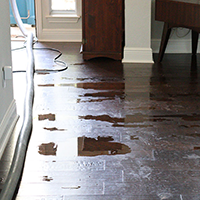What are your thoughts and feelings about How to Fix a Water Damage Bathroom?

The shower room is exceptionally vulnerable for damp accumulation as well as prospective water damages as a result of the frequent use of water in it. This write-up uses basic inspection strategies to aid spotting water damage hazards.
The constant use water in the washroom makes it very prone for damp accumulation and also possible water damages. By examining it routinely, you can decrease water related problems.
The adhering to set of evaluations is easy to execute as well as ought to be done once in every 3 months in order to maintain your washroom healthy as well as to avoid potential water damages brought on by the bath tub, the shower, pipeline joints as well as plumbing, sinks, cabinets, and the bathroom
Do not disregard doing these inspections and be thorough while doing them. Bear in mind that these easy inspections can conserve you a lot of money by providing very early signs for water damage
Sinks and Cabinets
Sinks and also cupboards are subjected to moisture and also moisture everyday as well as are frequently overlooked. Examine routinely under the sink and also on the counter top over it. Repair any drip in the catch as it might suggest drainpipe problems. Look around the sink, sluggish draining pipes might show an obstructed drain. Change sink seals if they are split or loose.
Tub and Shower
The shower as well as bathtub call for unique attention as well as upkeep. Check the floor tiles as well as replace if split. Ensure that there is no missing out on cement in between the floor tiles. Examine and change fractured caulking at joints where the walls meet the floor or the bathtub. Blocked drains and also pipes troubles will stop the bathtub from drying out as well as might suggest serious troubles under the tub. Seek advice from an expert immediately to stop structural damage. Focus on discolorations or soft locations around the bath tub wall surfaces as they might indicate an internal leak.
Plumbing
Signs for water damages are hard to find since a lot of pipelines are mounted inside the walls.
Pay unique focus to flooring and walls wetness and also stains as they may indicate an unseen plumbing issue. Check moisture degrees in adjacent areas too.
The Commode
The toilet is an at risk water joint. Inspect the water lines and also search for leakages around the toilet seat, in the pipe, and also under the water container. If you spot any kind of indicators of moisture on the floor around the toilet, check for leakages in the toilet edge as well as tank seals.
Realize that hanging toilet bowl antiperspirants boosts the possibilities for blockages.
Water Damage Signs In The Bathroom To Avoid Cleanup
Musty smell
This is one of the easiest signs to catch because musty smells are so odorous. The damp, earthy, moldy smell should be a big red flag. The smell will develop when moisture gets trapped in surfaces, and begins to facilitate mold growth. Leaking pipes under cabinets, inside walls, and behind shower fixtures will cause moisture to stay trapped and not dry, which will lead to mold growth and spread. As soon as you notice any musty smells in your bathroom, have it checked for hidden water damage and cleanup signs.
Visible mold
If the smell isn’t there to give it away, sometimes you will actually see mold growth. Finding mold in your bathroom is a serious problem, because mold is very harmful to your health. By the time mold growth is visible, it also means that water damage has already occurred and been present for some time. The only way the mold problem can be resolved is to find the source of the moisture and get it stopped. To safely and adequately remove mold, you need to have professionals handle the remediation. Do not waste any time in getting mold problems addressed, fixed, and sanitized so that you can protect you and your family from the many respiratory symptoms caused by mold exposure.
Damaged floors
Bathroom floors should be able to withstand some exposure to water while still remaining in good condition. However, when excess exposure or water leaks occur, they will begin to damage even the most water-resistant flooring. If you notice any cracking, bubbling, staining, or warping on your bathroom floors, there is probably a water leak somewhere causing the distortion. If you notice areas of the floor have become softer, or even have a spongy feeling, there is probably damage to the subfloor. Subflooring is typically made up of plywood. When plywood is exposed to water or moisture, it will absorb it. Once it has become saturated, the weight of the excess water will cause the wood to swell and soften. Check the floors in your bathroom frequently to catch any of these sings before they lead to damaged subflooring.
Changes on walls
When water leaks behind walls, it will cause changes in the drywall. Peeling plaster, blistering paint, and soggy wallpaper are all good indicators that excess water is building up behind the wall. Water leaking behind drywall will cause it to swell and be soft to the tough. If you start to notice gaps along the trim of your walls, or where tile meets the wall, it could also be a strong indicator that there is a leak behind the wall. Any changes, distortion, or damage on the walls should be evaluated as soon as you notice it to prevent further water damage and cleanup.

I am just very curious about Looking for Signs of Water Damage in the Bathroom and I hope you appreciated our entry. Are you aware of somebody who is truly interested in the topic? Feel free to share it. Thank-you for taking the time to read it.
Maintenance Sign-Up